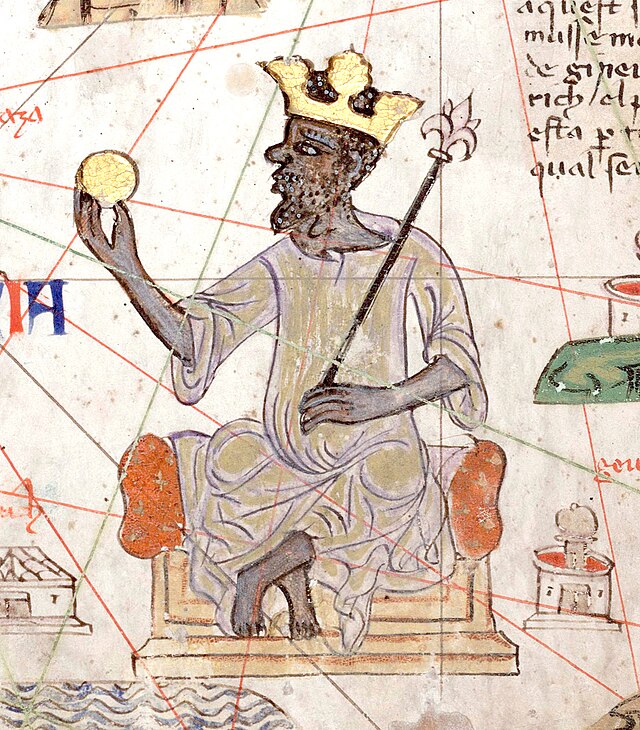In 1324 CE, Mansa Musa, the ruler of the Mali Empire, embarked on one of the most famous journeys in history—his pilgrimage (Hajj) to Mecca. What made this journey legendary was not just its religious significance but the unprecedented amount of gold Mansa Musa brought with him. As he traveled across West Africa, North Africa, and the Middle East, he distributed so much gold that it disrupted economies, caused inflation, and cemented Mali’s reputation as one of the wealthiest empires in history.
This chapter explores how Mansa Musa’s pilgrimage influenced global gold markets and highlights West Africa’s role in the medieval gold trade.

Who Was Mansa Musa?
- Mansa Musa (r. 1312–1337 CE) was the tenth ruler (Mansa) of the Mali Empire, one of the richest and most powerful kingdoms in medieval Africa.
- Mali controlled vast gold mines in West Africa, particularly in Bambuk, Bure, and Galam, making it the world’s largest gold producer at the time.
- Under Mansa Musa’s reign, Timbuktu became a center of Islamic learning, trade, and culture.
The 1324 Pilgrimage: Gold on a Massive Scale
Mansa Musa’s Hajj to Mecca was unlike any pilgrimage before or after. His massive caravan included:
✅ 60,000 people, including soldiers, officials, scholars, and slaves.
✅ 12,000 slaves, each carrying gold bars.
✅ 80–100 camels, each loaded with 136 kg (300 lbs) of gold.
✅ Lavish spending on mosques, scholars, and the poor.
As he passed through Cairo (Egypt), Medina, and Mecca, he spent and gifted so much gold that it caused inflation and impacted gold markets for over a decade.
The Economic Impact of Mansa Musa’s Gold
1. Inflation in Cairo & the Middle East
- In Cairo, Egypt, Mansa Musa gave away and spent so much gold that the price of gold collapsed, causing severe inflation.
- Gold became so devalued that it took 12 years for the economy to recover.
2. Increased Trade Between Mali & the Islamic World
- Mali became internationally recognized as a wealthy empire, attracting traders from North Africa, the Middle East, and Europe.
- Timbuktu became a key hub for gold trade and Islamic scholarship.
3. European Interest in Africa’s Gold
- Mansa Musa’s pilgrimage spread stories of Mali’s gold wealth across the Mediterranean.
- This increased European interest in African trade, influencing later Portuguese and Spanish exploration.
Conclusion: Mansa Musa’s Gold Pilgrimage as a Global Economic Event
Mansa Musa’s 1324 pilgrimage was not just a religious journey—it was a global financial event. By flooding the market with gold, he:
✅ Proved Mali’s dominance as the world’s largest gold supplier.
✅ Shifted the global gold economy, affecting prices for years.
✅ Connected West Africa to global trade networks, influencing future European exploration.
His journey remains one of the most famous demonstrations of Africa’s wealth and influence in medieval global trade.
